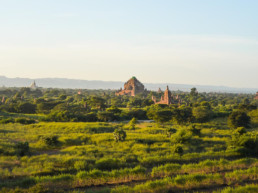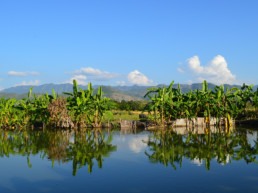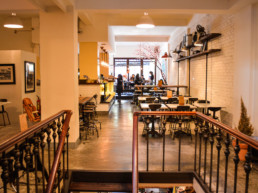Yangon, formerly Rangoon, is the often misunderstood and overlooked commercial centre of Myanmar. If it weren’t for the mighty Shwedagon Pagoda and an international airport, many a traveler to this region might overlook the growing city of more than five million on route to the temple planes of Bagan. Though, their loss may be your gain. If you have a stopover in Yangon, I suggest extending it by a day or two, and have your camera ready.
A Feast For The Eyes
The story of Yangon is a complicated one. With Myanmar transitioning from a military dictatorship towards democracy over the past decade, with significant changes as recently as the 2015 elections, Yangon is quite literally rocketing forward. New skyscrapers rapidly replace a history of rich, yet crumbling, colonial architecture as the city races to catch up to the progress of its Southeast Asia counterparts. While Buddhist monks, temples and street food vendors abound, they are surrounded by a mounting garbage crisis, congested roads and gut wrenching divide between the wealthy, the poor, and the incredibly poor.
It’s been said that Ho Chi Minh City in Vietnam is the Bangkok of 10 to 20 years ago. If that’s true, Yangon is currently the Ho Chi Minh City of 20 to 30 years ago. Globally minded travellers with a pension for photography are likely to love and hate the city simultaneously, though you really have to see it to believe it.
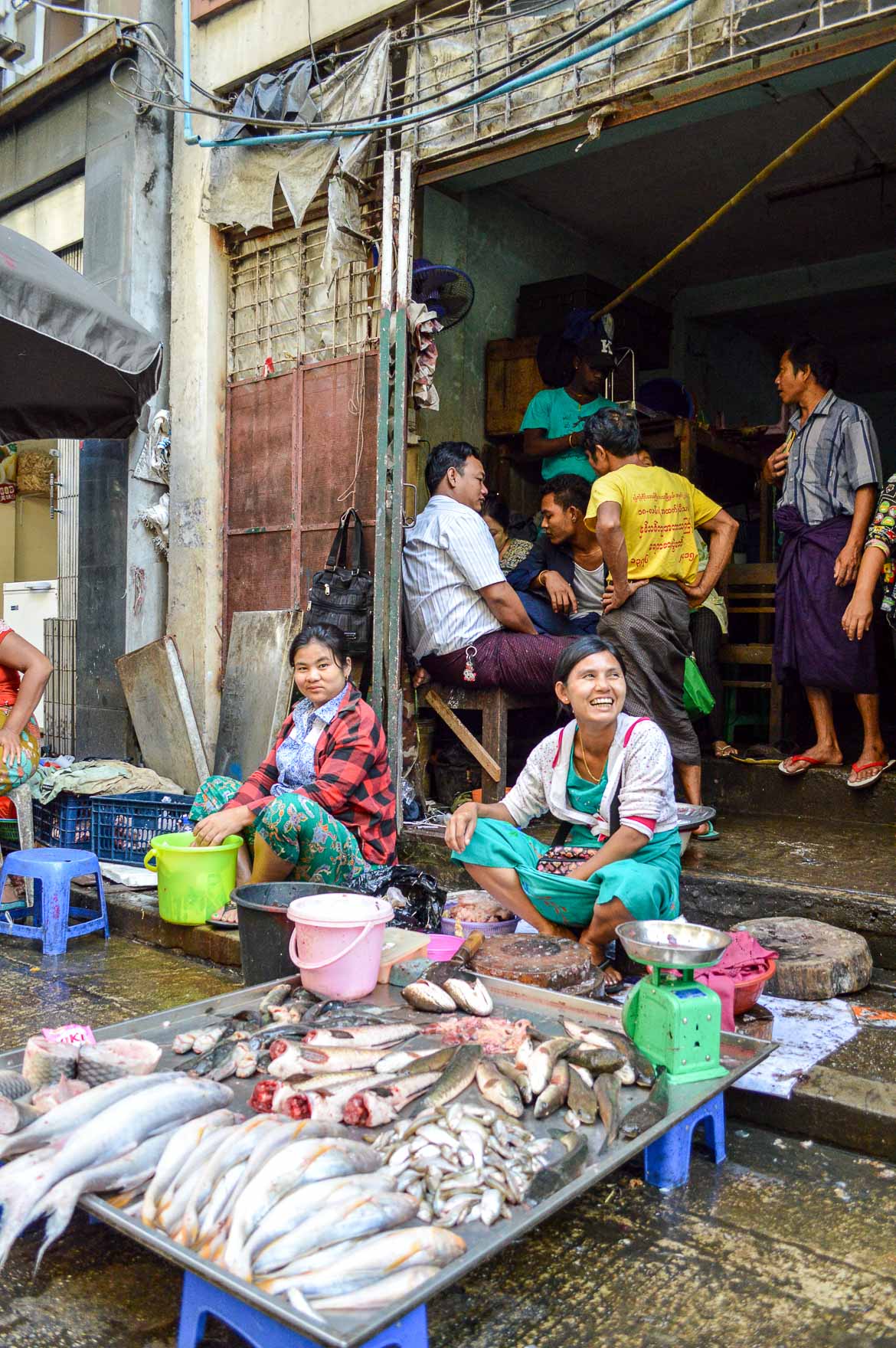
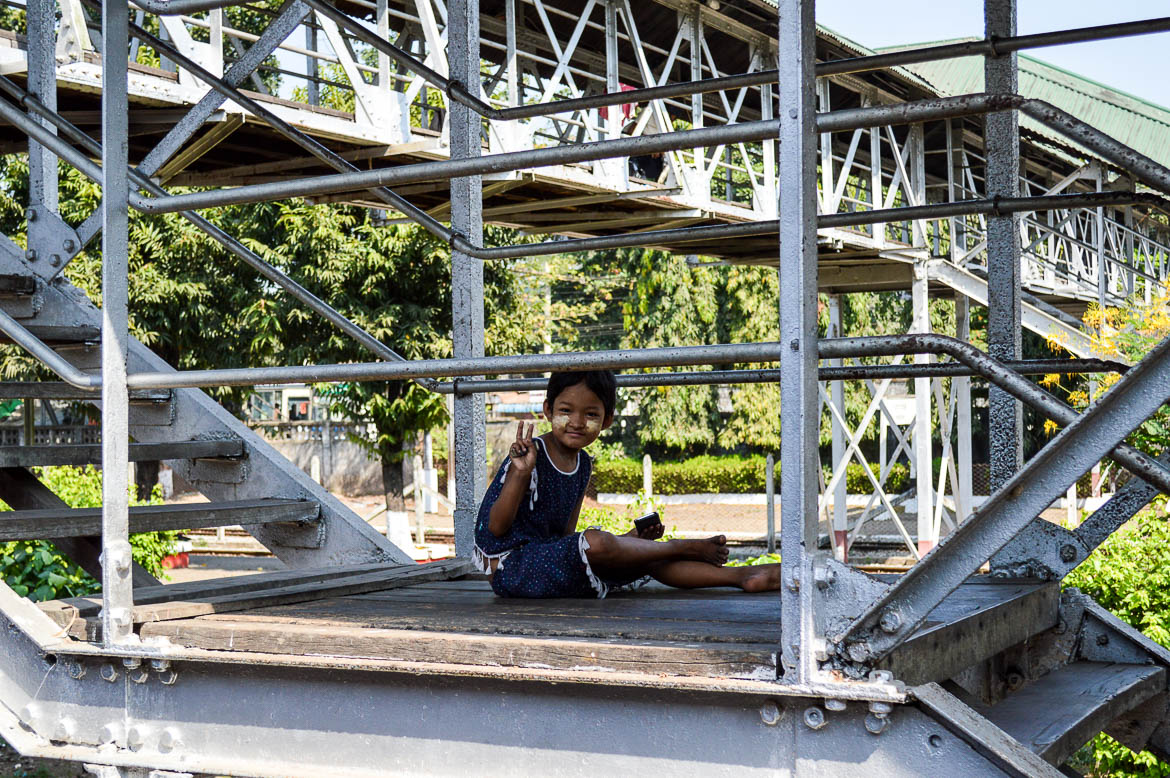
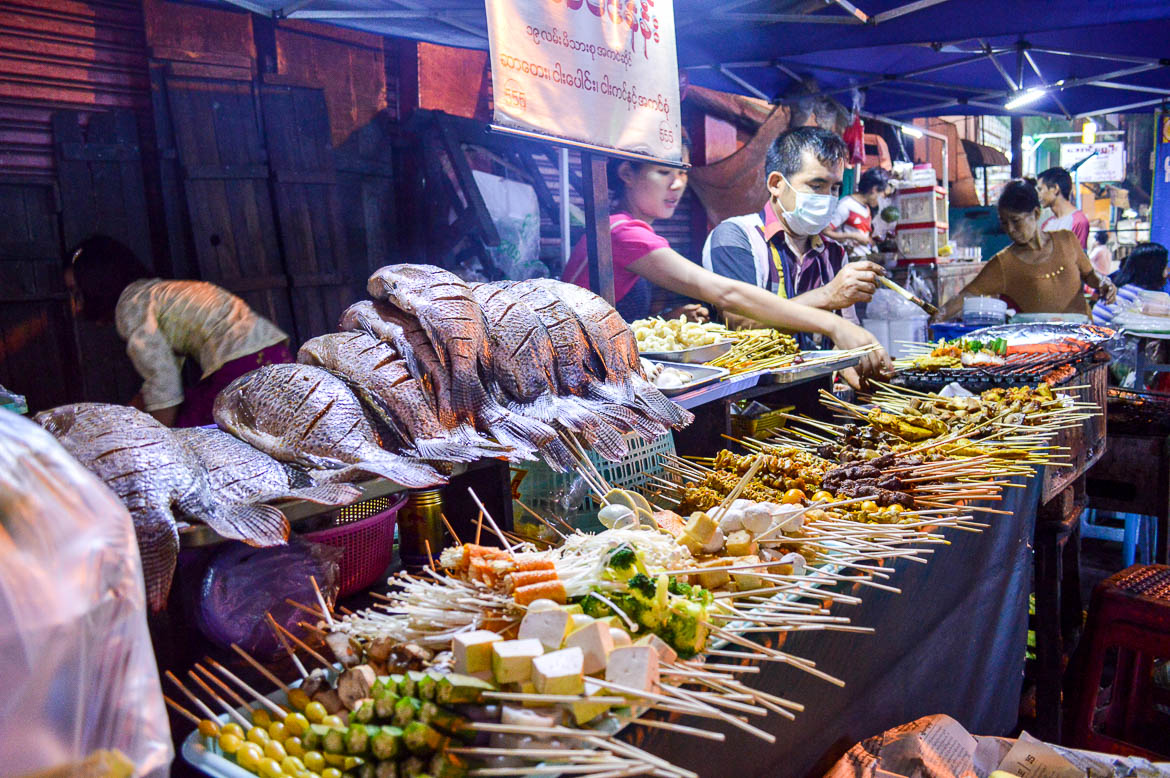
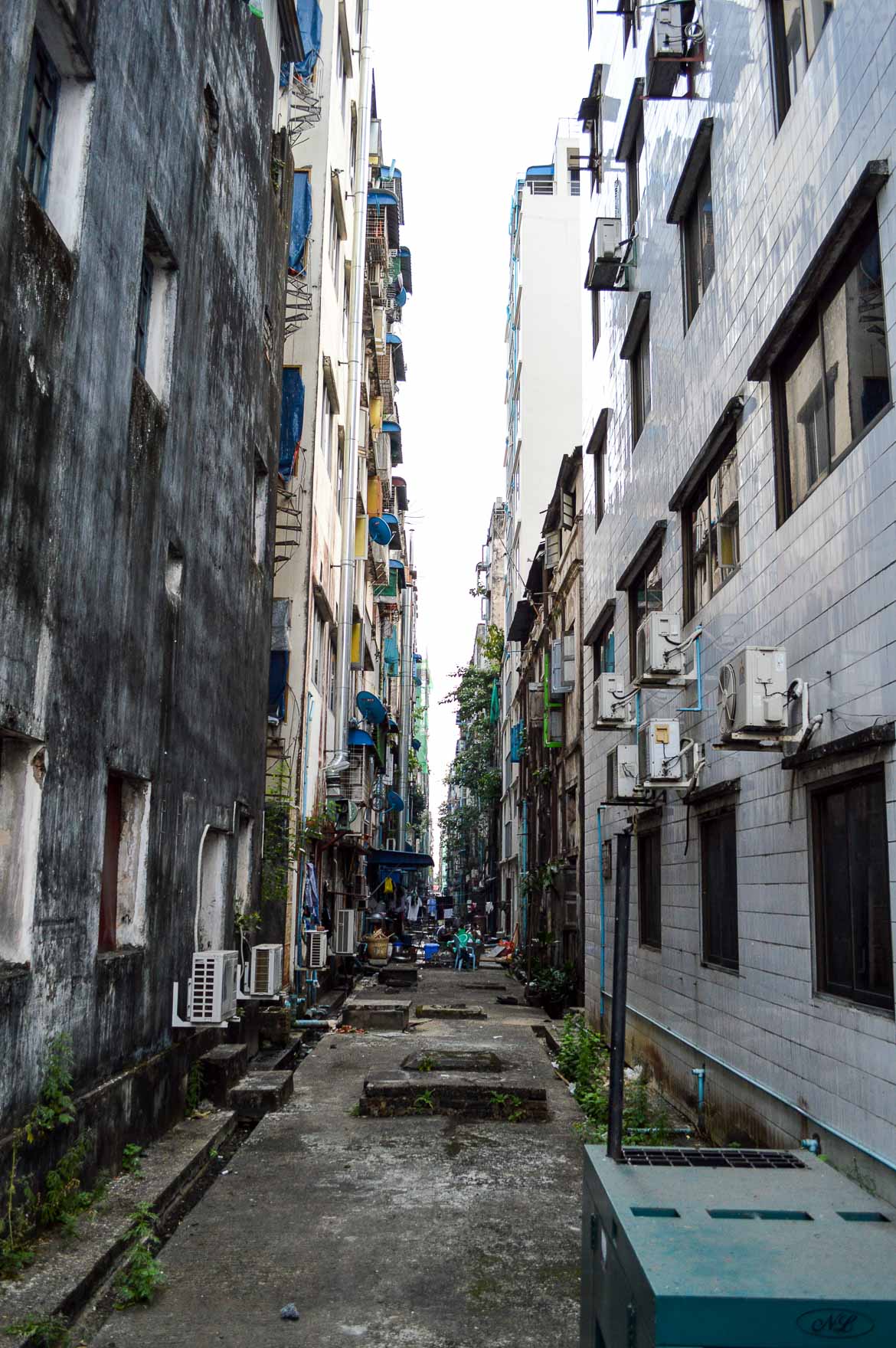
Enter Yangon Of The Day, an enterprising non-profit initiative by tastemakers Alexandra Vanderschelden and Minn Htet Khine. The pair aim to show the many facets of this “beautiful, complex and vibrant city… and empower residents to share the reality of their Yangon” Vanderschelden explains. Each day, they review Facebook and Instagram posts which use the hashtag, selecting one to feature on the account. The very first photo was posted October 17, 2015. To date, the #YangonOfTheDay hashtag appears nearly 5,000 times, featuring imagery from hundreds of different local and international traveller contributors. The group recently celebrated its one-year anniversary with a charity art exhibition – with the aim to repeat annually.
Would-be travellers to Yangon are well served by spending time with the social feed to better understand the destination. I’ve selected a few favourites that help to tell the story of this intriguing city:
Yangon Circular Train
It’s one of the most well-known ways that adventurous travellers can pass the time getting to know the people and city. Perhaps most eye opening is the portion of travel outside of the city centre, with both green farmers fields and poverty abound. The nearly 46km track has 39 stops and takes roughly three hours to complete a full loop, although if that’s too long, hop off at any stop and take a taxi to your next destination. For a mere 200 kyat (less than $0.15 USD) you’ve got front row ticket to a true show of local life. The train is busiest – read best – in the early morning hours, with vendors walking up and down the cars selling fruit, quail eggs, live chickens, cigarettes and cold drinks among many other things.
The line between markets and tracks frequently blur, with vendors moving on and off the tracks at Da Nyin Gone Railway Station between train arrivals. Most travellers staying downtown will hop on at the Central Yangon Railway or Phaya Lan Train Station. Locals and staff are helpful to point you in the right direction if you’re lost or need information while waiting the 15 to 30 minutes between each train. Quick tip – bring plenty of water and snacks onboard as your ride is most certainly not air-conditioned and you may not be feeling any of the local food available from hawkers on board.
A post shared by Yangonoftheday (@yangonoftheday) on
A post shared by Yangonoftheday (@yangonoftheday) on
A post shared by Yangonoftheday (@yangonoftheday) on
Traffic
For some reason counter to logical city planning, at least in my personal opinion, motorcycles are banned in the city centre. Besides the slow and inconvenient circular train mentioned above, options for public transportation are essentially limited to packed street buses, which are not for the faint of heart. A ten kilometre taxi ride from the Yangon International Airport (RGN) to downtown takes 60 to 80 minutes in midday, while longer during rush hour. Given how aggressive most drivers are, it’s understandable why the number of pedal bicycles, which are allowed, is comparatively low versus other large Asian cities. The last option is to hire a ‘cyclo‘ rickshaw to pedal you between destinations, however their limited ability to weave between traffic and their incredible rust and old age diminishes the relative appeal.
A post shared by Yangonoftheday (@yangonoftheday) on
A post shared by Yangonoftheday (@yangonoftheday) on
A post shared by Yangonoftheday (@yangonoftheday) on
Youth
Myanmar is a young country. Many marry by 16 or 18, have their first child by 20, and consider anyone over 60 to be incredibly old. According to World Bank, those 65+ represent only 5% of the nation’s population, compared to 15% for United States, 20% for Sweden, or even 10% for neighbouring country Thailand. Consequently, many of the memorable faces and encounters you’ll have are with children.
A post shared by Yangonoftheday (@yangonoftheday) on
A post shared by Yangonoftheday (@yangonoftheday) on
A post shared by Yangonoftheday (@yangonoftheday) on
Monks
Yangon has several Buddhist temples, most notably Shwedagon Pagoda, which is one of the most sacred and elaborate sites in the nation. It’s therefore no coincidence that you’ll regularly see monks and young novice monks walking the streets for morning alms, visiting temples or simply studying in nearby monasteries.
A post shared by Yangonoftheday (@yangonoftheday) on
A post shared by Yangonoftheday (@yangonoftheday) on
A post shared by Yangonoftheday (@yangonoftheday) on
Street Food
An array of Thai, Indian and Burmese dishes are offered on several street corners in Yangon. The greatest density of tasty and affordable BBQ options can be found on Chinatown’s 19th street. Each night plastic tables and chairs pour into the street alongside displays of fresh seafood ready to be cooked to order. Top it off with a pint (or 3L tower) of Myanmar Gold and you’ll have a memorable night.
A post shared by Yangonoftheday (@yangonoftheday) on
A post shared by Yangonoftheday (@yangonoftheday) on
A post shared by Yangonoftheday (@yangonoftheday) on
Markets
Simply put, Yangon is a million miles behind the energy of the Chiang Mai night market or the monolith that is Ho Chi Minh’s Ben Thanh Market. The main market servicing tourists is Bogyoke Aung San Market. It is a comparatively small, well organized, clean and brightly lit indoor and outdoor operation in the centre of the city, just steps from the Yangon Central Railway Station. While it seems other Southeast Asian cities have street vendors who hawk similar cheap t-shirts, faux lacquerware and knock-off Ray Bans, the streets of Yangon are filled with sidewalk bookstores, brass antiques and coins, and fruit sellers.
A post shared by Yangonoftheday (@yangonoftheday) on
A post shared by Yangonoftheday (@yangonoftheday) on
A post shared by Yangonoftheday (@yangonoftheday) on
Arts & Culture
To the surprise of many, Yangon has a growing arts and culture scene. Within 24 hours of arriving, no less than three free events presented themselves. First up, a Christmas carol concert at popular downtown landmark Holy Trinity Cathedral with an invitation for visitors of all faiths. Several major roads were closed over two days as the Yangon Living Street Experience from Dec 1oth to 11th, showcased traditional dance, food and artisans for tens of thousands of attendees. Also within the core, the #YangonOfTheDay inaugural art exhibit and charity auction drew scores of intrepid travellers. On an ongoing basis, Yangon Life and Myanmore offer comprehensive listings of happenings in the city.
A post shared by Yangonoftheday (@yangonoftheday) on
A post shared by Yangonoftheday (@yangonoftheday) on
A post shared by Yangonoftheday (@yangonoftheday) on
Architecture
Though the face of Yangon is rapidly changing, many historic architectural gems remain thanks to the Yangon Heritage Trust. The non-profit group advises both government and the private sector on responsible development policy and strategy. Volunteers also lead walking tours around the city showcasing popular landmarks such as Sule Pagoda, City Hall, the High Court and various other religious landmarks.
A post shared by Yangonoftheday (@yangonoftheday) on
A post shared by Yangonoftheday (@yangonoftheday) on
A post shared by Yangonoftheday (@yangonoftheday) on
Yangon Travel photos courtesy of Madeline Burch and YangonOfTheDay Instagram account.
Make your next trip the best one.
Departful is a full service travel agency creating truly exceptional travel experiences that are 100% personalized to you. Wherever you’re going, whatever your interests, we help you plan the perfect trip.
Madeline Burch
Madeline was born and raised in Toronto Canada, educated in marketing, and has worked in brand management and the alcohol industry for nearly a decade. In search of great drinks, stories and photos, she has travelled to South East Asia multiple times including a recent eight month stint based in Vietnam. From luxe travel to volunteer missions, she’s interested in it all.


